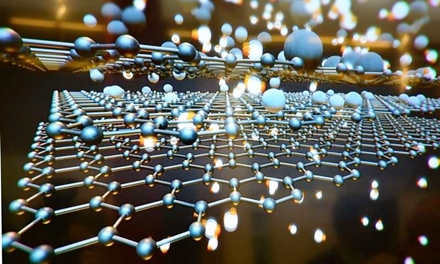|
NOVIDADES
Researchers at The Ohio State University, in collaboration with scientists around the world, have made a discovery that could provide new insights into how superconductors might move energy more efficiently to power homes, industries and vehicles. Their research, published last week in the journal Science Advances ("Correlated insulating and superconducting states in twisted bilayer graphene below the magic angle"), showed that graphene – a material composed of a single layer of carbon atoms – is more likely to become a superconductor than originally thought possible.  Researchers have learned more about the potential of graphene to be a superconductor of electricity. PhysOrg
Unlike most conventional conductors, superconductors are metals that can conduct electricity without resistance, thus suffering no loss of energy. Graphene is two-dimensional crystal – a perfectly flat piece of carbon – and, as a single layer, is not a superconductor. But earlier this year, scientists at the Massachusetts Institute of Technology published research that showed that graphene could become a superconductor if one piece of graphene were laid on top of another piece and the layers twisted to a specific angle – what they termed “the magic angle.” That magic angle, scientists thought, was between 1 degree and 1.2 degrees – a very precise angle. “The question is, the magic angle, how magic does it have to be?” said Emilio Codecido, a graduate student in Lau’s lab and a co-author on the paper. The Ohio State team found that the magic angle appears to be less magical than originally thought. Their work found that graphene layers still superconducted at a smaller angle, around 0.9 degrees. It is a small distinction, but it could open the possibility of new experiments to investigate graphene as a potential superconductor in the real world. So far, superconducting is limited outside of scientific laboratories because in order to superconduct electricity, the electric lines must be kept at extremely low temperatures. “This research pushed our understanding of superconductors and the magic angle a little further than the theory and prior experiments might have expected,” said Marc Bockrath, a co-author of the paper and physics professor at Ohio State. “Superconductivity could revolutionize many industries – electric transmission lines, communication lines, transportation, trains,” Codecido said. “Superconductivity in twisted bilayer graphene will teach us about superconductivity at much higher temperatures, temperatures that will be useful for real-world applications. That’s where future work will be focused.” Ohio State University. Posted: Oct 02, 2019. |
|||||||||||||||||||||||||